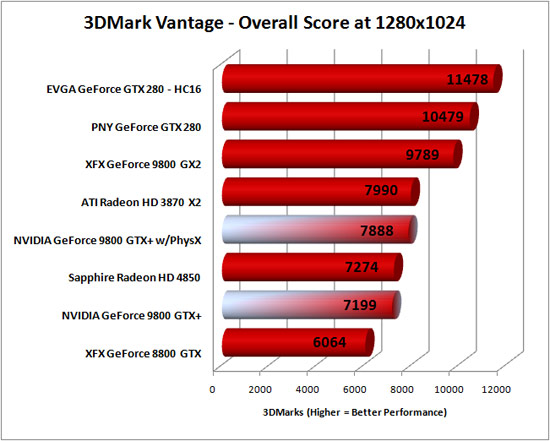On a per pin basis one is double data rate and another is quad data rate.
Install the app
How to install the app on iOS
Follow along with the video below to see how to install our site as a web app on your home screen.
Note: This feature may not be available in some browsers.
You are using an out of date browser. It may not display this or other websites correctly.
You should upgrade or use an alternative browser.
You should upgrade or use an alternative browser.
AMD: R7xx Speculation
- Thread starter Unknown Soldier
- Start date
- Status
- Not open for further replies.
=>Nebuchadnezzar: I know I used that acronym a few pages back, but I haven't been following the discussion since. QDR is no specific type of DRAM, it means Quad Data Rate and I was proposing a theory (based on the clocks GPU-Z(?) detected), that GDDR5 could physically run at quarter the effective speed, transporting data 4 times per clock, instead of classic DDR where the physical frequency is half the effective frequency. Who knows...
Mintmaster
Veteran
So I guess when people say the "real" clock of 3.6GHz GDDR5 is only 900MHz, the latter refers to internal RAM chip clock, and the communication is still using a 1.8 GHz clock with a transfer on both the rising and falling edges, right?On a per pin basis one is double data rate and another is quad data rate.
digitalwanderer
Legend
LOVE the new sig Dave!






Umm, I thought if the effective clock is 3,6 GHz, then the data are simply "sent" 3,6 billion times per second, or not?So I guess when people say the "real" clock of 3.6GHz GDDR5 is only 900MHz, the latter refers to internal RAM chip clock, and the communication is still using a 1.8 GHz clock with a transfer on both the rising and falling edges, right?
Nebuchadnezzar
Legend
They should have stayed with either the effective frequency all along or added some kind of "QEDR - quad effetice data rate" somewhere with the nomenclature, many won't know that 900MHz GDDR5 is twice as fast as 900MHz GDDR3/4So I guess when people say the "real" clock of 3.6GHz GDDR5 is only 900MHz, the latter refers to internal RAM chip clock, and the communication is still using a 1.8 GHz clock with a transfer on both the rising and falling edges, right?

Test Results:Notice that the Sapphire Radeon HD 4850 graphics cards actually beats out the NVIDIA GeForce 9800 GTX+ without the help of Physics. With Physics enabled the NVIDIA card with PhysX support gets a boost to the overall score thanks to the performance gained in the CPU test. The physics speedup carries a 25% weight on the final 3DMark score at the Performance Preset. http://www.legitreviews.com/article/731/14/
I did wonder that ATI 4870 should be 30% percent faster then ATI 4850. So in 3DMark Vantage it should score ~P8300 points. "The question remain - is it worth extra cash for 4870 ??"
Indeed. But we're transitioning to referring to pin rate - i.e. 3.6Gbps.So I guess when people say the "real" clock of 3.6GHz GDDR5 is only 900MHz, the latter refers to internal RAM chip clock, and the communication is still using a 1.8 GHz clock with a transfer on both the rising and falling edges, right?
I did wonder that ATI 4870 should be 30% percent faster then ATI 4850. So in 3DMark Vantage it should score ~P8300 points. "The question remain - is it worth extra cash for 4870 ??"
When I multiply 7274 by 1.3 I get ~9400. Are any of the cards over $200 worth it?
this is so retarded to include physX to total Vantage score ...
its just more of the same , 3dmark has allways provided benfits to nvidia cards in the game test while pushing benfits to ati into none scoring tests
this is so retarded to include physX to total Vantage score ...
I think it's a major deficiency to have one base total score. They should have kept the GPU, CPU, and Physics tallies separate.
When I multiply 7274 by 1.3 I get ~9400.
Are any of the cards over $200 worth it?
If ATI 4870 performs very close to GF9800GX2 and you have 24" or 30" inch monitor, "AND" If 4870 drops to range ~$270.00 US dollars - then it might worth it.
whats the release date for r700? if the performance is right that's the card ill be getting also i hope the drivers will be decent on release....
August 2008.
Question! Why do you want to get 4870X2 ??
With the current strcuture that wouldn't be particularly telling either. In actual games physics and graphics would be contending for the same resources and in the GPU accelerated case you would effectively be "double scoring" graphics and physics scores.I think it's a major deficiency to have one base total score. They should have kept the GPU, CPU, and Physics tallies separate.
I was wondering if ATI will unlock extra 40 or 50 stream processors for RV770XT "HD4870". = Total 840 or 850 stream processors.
It would be nice to do it at least for 4870x2
Question! Why do you want to get 4870X2
Because i have a single pci-e 2.0 motherboard crossfire on a stick and such...
Why does it matter its not set in stone I am hoping they turn out great if they don't ill get a gtx280 whatever works.
Do you have something against it? Seems like you have a chip on your shoulder.
- Status
- Not open for further replies.
Similar threads
- Replies
- 67
- Views
- 11K
- Replies
- 5
- Views
- 4K
- Replies
- 177
- Views
- 40K
D
- Replies
- 220
- Views
- 92K
